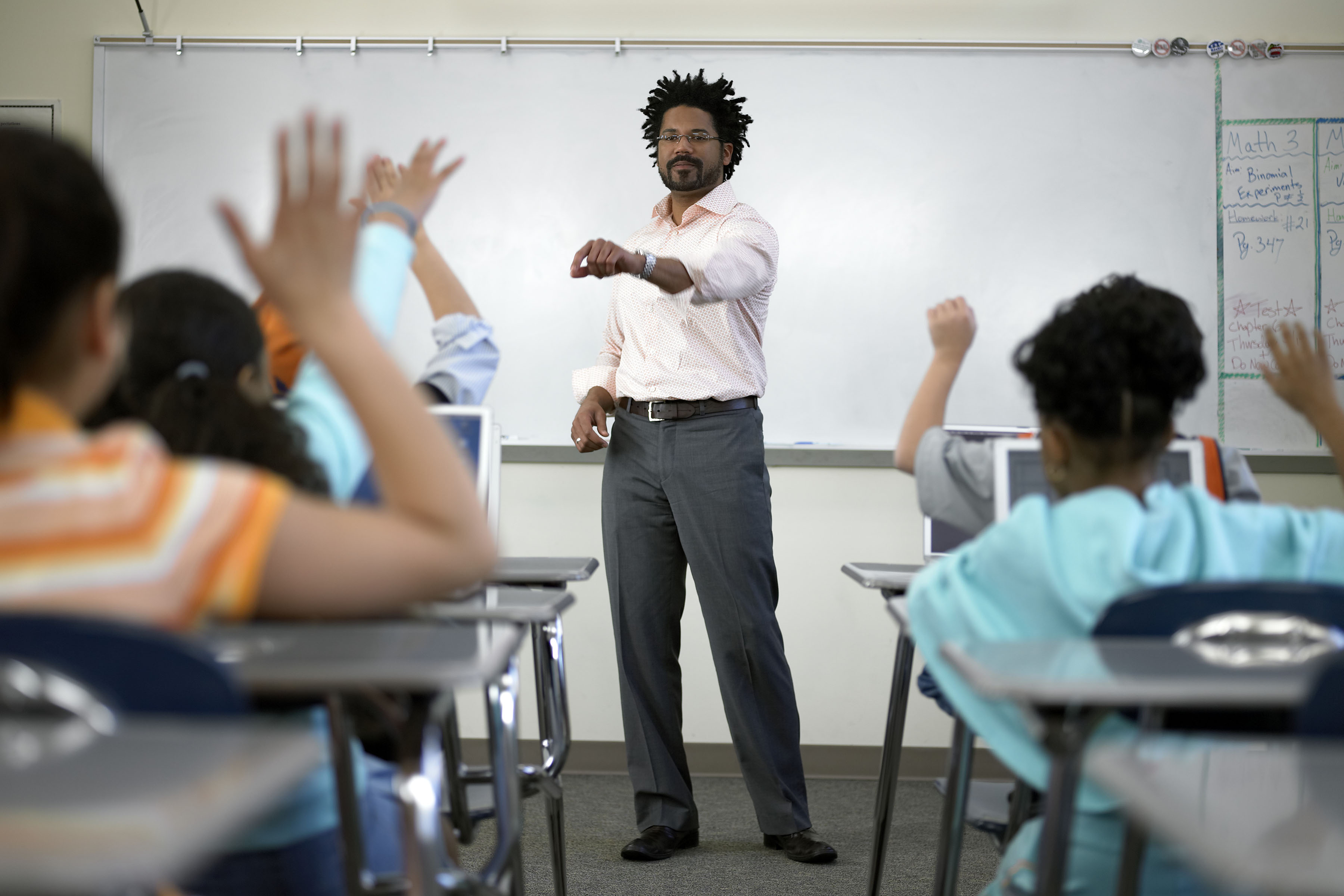The influence of having a black teacher can make a monumental difference in a black student’s life, and the effect begins early in an education.
Having just one black teacher in elementary school not only makes children more like to graduate high school – it also makes them significantly more likely to enroll in college.
All it takes is one black teacher to influence a student. — Joshua Hyman
Black students who’d had just one black teacher by third grade were 13 percent more likely to enroll in college – and those who’d had two were 32 percent more likely. The findings, from researchers at UConn, Johns Hopkins University, American University, and the University of California-Davis, were published recently in a working paper titled “The Long-Run Impacts of Same-Race Teachers” from the National Bureau of Economic Research.
Another, related working paper by the same team titled “Teacher Expectations Matter,” also published today by NBER, found teachers’ beliefs about a student’s college potential can become self-fulfilling prophecies. Every 20 percent increase in a teacher’s expectations raised the actual chance of finishing college for white students by about 6 percent and 10 percent for black students. However, because black students had the strongest endorsements from black teachers, and black teachers are scarce, they have less chance to reap the benefit of high expectations than their white peers.
Both papers underscore mounting evidence that same race teachers benefit students, and demonstrate that for black students in particular, positive outcomes sparked by the so-called role model effect can last into adulthood and potentially shrink the educational attainment gap.
“Black student students often don’t have parents or other black adults in their lives who have gone to college and gotten professional jobs,” says Joshua Hyman, an assistant professor of public policy at UConn, who has a joint appointment in the Department of Educational Leadership in the Neag School of Education. Hyman co-authored the papers along with researchers from the three other universities.
“All it takes is one black teacher to influence a student,” he adds. “They see someone like them in their classroom and start to believe they can go to college too, and get a good job.”
The paper appears to be the first to document the long-term reach of the role model effect. The researchers previously found that having at least one black teacher in elementary school reduced their probability of dropping out by 29 percent for low-income black students – and 39 percent for very low-income black boys.
The latest findings are based on data from the Tennessee STAR class size reduction experiment that started in 1986 and randomly assigned disadvantaged kindergarten students to various sizes of classroom.
The researchers replicated the findings with similar data for North Carolina students.
The study found that black students who’d had a black teacher in kindergarten were as much as 18 percent more likely than their peers to enroll in college. Getting a black teacher in their first STAR year, any year up to third grade, increased a black student’s likelihood of enrolling in college by 13 percent.
Black children who had two black teachers during the program were 32 percent more likely to go to college than their peers who didn’t have black teachers at all.
“What’s very interesting about this paper is that it looks later in a student’s life,” says Hyman. “It’s impressive that the impression of having a black elementary school teacher last that long. It helps reduce the race gap.”
Additionally, students who had at least one black teacher in grades K-3 were about 10 percent more likely to be described by their 4th grade teachers as “persistent” or kids who “made an effort” and “tried to finish difficult work,” the researchers found. These students were also marginally more likely to ask questions and talk about school subjects out of class.
Although enrolling in college is a positive outcome, one concern, according to the researchers, is that the main enrollment effect is driven by students choosing community college, where degrees aren’t as lucrative as those from four-year colleges. It’s also unclear because of incomplete data how many of the students from the study who enrolled in college eventually graduated.
Despite clear benefits for black students from same-race teachers, diversifying the education workforce so that every black student in the United States could have one would mean doubling the current number of black teachers, the researchers say. To put this into context, that would require 8 percent of all black college graduates to become teachers. Given low teacher pay, if that many black college graduates went into education, it would cut roughly one billion dollars from the already languishing cumulative black income.
Regarding teacher expectations, the authors previously found that when evaluating the same black student, white teachers expected significantly less academic success than black teachers. Now the researchers show compelling evidence that these biases affect whether students make it to college, graduate, and begin their adult life focused on a career.
“One of the lingering issues of this paper is that we have to entice black people to enter the teaching areas,” says Hyman. “In schools where there is a large black population, that has to be addressed.”



